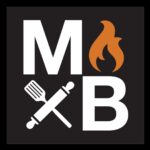a group of dietary sugars called FODMAPs can be responsible for IBS symptoms
Irritable Bowel Syndrome (IBS) triggers are more than just fatty foods, alcohol, gluten and caffeine. Research has identified a group of sugars that are poorly absorbed by the small intestine which can trigger IBS symptoms. I remember my GP first recommending a low FODMAP diet when I was breastfeeding my youngest as he was cranky, gassy and not sleeping well. It turned out that he was reacting to foods like onion and broccoli. I find it incredible that the food you eat can have such an impact on your body and your child’s. While I couldn’t fully commit to the diet at the time due to the busyness of two children under two I did eliminate foods such as broccoli, cauliflower, onion, garlic, dairy and gluten. The result was a much happier little man.
My fully committed low FODMAP diet began in August this year as part of a treatment for medically diagnosed IBS. Having IBS is incredibly uncomfortable and at times, unreliable. Bloating, stomach aches, waking in the night with extreme cramps and diarrhoea. There were times driving to the gym early in the morning when I needed to turn around and head home to get to the bathroom.
While having some success managing the condition by avoiding triggers such as wine, cheese and chocolate, there were still foods that caused a stomach upset that I could not pin point. Let me repeat triggers are wine, cheese and chocolate. Good bye cheese and wine nights, good bye Friday after work nibbles, good bye sneaking the kids left over chocolate.
After meeting with a gastroenterologist for a gastroscopy and colonoscopy to confirm there wasn’t anything more serious going on, I met with a dietician and started a low FODMAP diet. I was also able to use natural products such as IBS Support probiotics, mintec, iberogast and benefiber as part of my treatment. After 5 weeks I began to slowly re-introduce different groups of foods and testing for a reaction.
At first the low FODMAP diet can be quiet over whelming. However, already being gluten free and at times dairy free, things were a little easier for me. There were things that I couldn’t eat but instead of focusing what I couldn’t eat I focused on what I could.
- No watermelon, apples and pears – yes to pineapple, grapes and mandarins
- No to cauliflower and sweet potatoes – yes to small amounts of broccoli and regular potatoes
- No to onion and garlic – yes to sautéing a small amount of celery for bolognaise sauce
- No to milk and white chocolate – yes to dark chocolate
- No to fruit juices – yes to cranberry juice
- No to almonds and cashews – yes to macadamias, pecans and walnuts
- No to honey and golden syrup – yes to maple syrup, rice malt syrup and raw sugar
I downloaded the Monash University FODMAP app and found it was a great help when shopping or out and about to check for suitable ingredients. We are a big BBQ family, firing up our gas WeberQ or one of the charcoal BBQs at least 4 times a week. Meat has no affect on IBS so we always cook a little extra to have for leftovers later in the week. Once I got the hang of things the low FODMAP diet wasn’t overly difficult to manage and I was able to get creative. The things I missed the most were:
- using ingredients such as almond pulp and dates to make gluten free/refined sugar free treats
- cauliflower for making low carb rice and mash
- onion and garlic which is in all my favourite sauces, mustards, seasonings etc.
Here is a little run down of what I did eat for meals.
Breakfast
- coconut yogurt
- almond milk smoothie with pea protein powder
- The Life-Changing Loaf made with macadamias as a replacement for the hazelnuts/almonds
- gluten free low FODMAPs approved toast (I purchase the Helga’s Continental Bakehouse gluten free range) with peanut butter (try cacao peanut butter)
- gluten free cornflakes with chia, sunflower, pepitas, macadamia nuts, maple syrup and almond milk

Lunch
- leftover meat and salad or steamed veggies (carrots, broccoli and green beans)
- gluten free low FODMAPs approved toasted sandwich
- tuna sushi
- fresh rice paper rolls
- rice cakes with tuna, mayo, lettuce and tomato slices
Dinner
- spaghetti bolognaise (our kids’ favourite meal). My go to Thermomix recipe is the Skinnymixers Chunky Bolognaise with low FODMAP changes (1 small stick of celery as a replacement to onion and garlic). I also serve mine with zucchini noodles or spaghetti squash. Gluten free pasta would also be suitable
- char sui pulled pork with a simple coleslaw of carrot, cabbage, mayonnaise and apple cider vinegar
- BBQ meat ensuring you check all the ingredients in any rubs or marinades to avoid any foods on the high FODMAP scale. If in doubt salt and pepper will do
- naked beef burgers with no bun or traditional burger with a gluten free bun
- stir fry with rice and any meat with ginger, broccoli, carrots, capsicum and spinach
- BBQ meat with salad
- roast meat with roast veggies

Snacks
- seed nut crunch with nori
- nut free muesli bites
- popcorn
- rice crackers
- peanut butter cookies
If you are experiencing any IBS symptoms please talk to your doctor who can test to confirm the symptoms are not caused by something more serious. You can then meet with a dietician who is experienced with the low FODMAP diet and take the appropriate measures.


